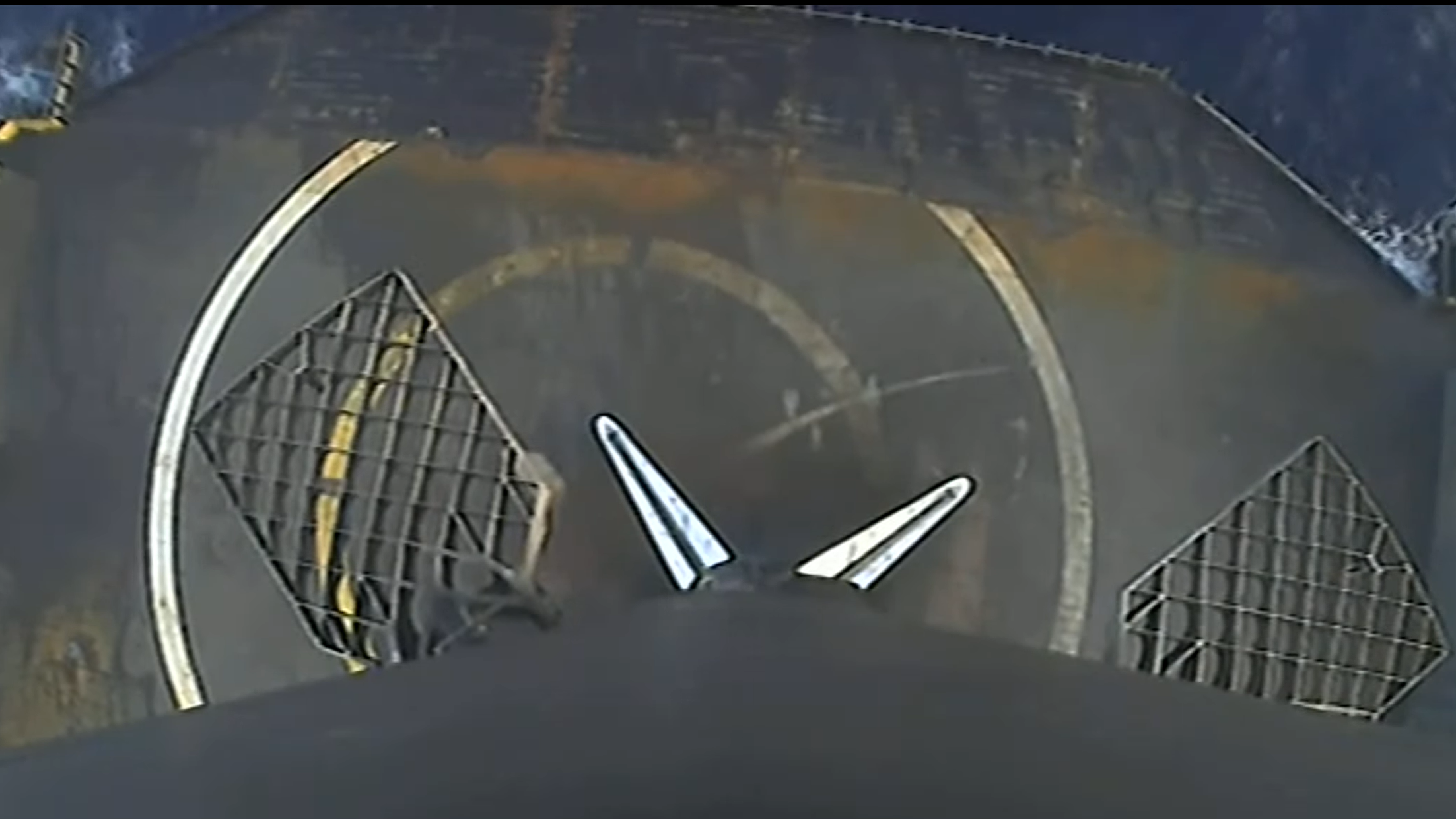SpaceX just launched its first Starlink mission of the year.
SpaceX brought another big batch of its Starlink internet satellites to orbit on Thursday (Jan. 19), and landed a fresh first stage of its Falcon 9 rocket as well.
The booster topped with 51 of SpaceX's Starlink internet satellites lifted off from California's Vandenberg Space Force Base on Thursday at 10:43 a.m. EST (1543 GMT; 7:43 a.m. local California time).
The launch was originally targeted for Jan. 9, but SpaceX stood down from that attempt due to bad weather. The company also scrubbed a potential try on Jan. 10 to take more time to examine data from the Falcon 9's upper stage. SpaceX then targeted Sunday (Jan. 15) but changed that plan to Jan. 18 due to bad weather. The target date then slipped again, to Thursday.
Related: 10 weird things about SpaceX's Starlink internet satellites

Just under nine minutes after launch, the Falcon 9's first stage came back to Earth, touching down on the SpaceX droneship Of Course I Still Love You, which was stationed in the Pacific Ocean. It was the first time this first stage had flown, according to the SpaceX broadcast.
The Falcon 9's upper stage, meanwhile, hauled the Starlink satellites to low Earth orbit and was expected to deploy all 51 of them 29 minutes after liftoff, according to a SpaceX mission description.
Get the Space.com Newsletter
Breaking space news, the latest updates on rocket launches, skywatching events and more!
Starlink is SpaceX's broadband internet constellation, which currently consists of more than 3,300 operational satellites.
That number is ever-increasing, as Thursday's liftoff shows, and may eventually become truly staggering. SpaceX has approval to launch 12,000 Starlink spacecraft and has applied for permission to loft nearly 30,000 more on top of that.
Editor's note: This story was updated at 10:50 p.m. ET on Jan. 9 with the new launch time of 12:35 a.m. EST. It was updated again at 12:15 a.m. ET on Jan. 10 with the news that SpaceX decided to stand down from the Monday night/Tuesday morning attempt due to bad weather. It was updated again at 10:50 p.m. ET on Jan. 10 with the news that SpaceX had canceled that day's possible attempt to examine data from the rocket's upper stage, then again at 3 p.m. ET on Jan. 11 with news of the new target date of Jan. 14, and then again at 4 p.m. ET on Jan. 11 with news of the shift to Jan. 15. It was updated again at 4:55 p.m. ET on Jan. 13 with news of the new target date of Jan. 18. The story was updated Jan. 19 with news of the successful liftoff.
Mike Wall is the author of "Out There" (Grand Central Publishing, 2018; illustrated by Karl Tate), a book about the search for alien life. Follow him on Twitter @michaeldwall. Follow us on Twitter @Spacedotcom or Facebook.
Join our Space Forums to keep talking space on the latest missions, night sky and more! And if you have a news tip, correction or comment, let us know at: community@space.com.

Michael Wall is a Senior Space Writer with Space.com and joined the team in 2010. He primarily covers exoplanets, spaceflight and military space, but has been known to dabble in the space art beat. His book about the search for alien life, "Out There," was published on Nov. 13, 2018. Before becoming a science writer, Michael worked as a herpetologist and wildlife biologist. He has a Ph.D. in evolutionary biology from the University of Sydney, Australia, a bachelor's degree from the University of Arizona, and a graduate certificate in science writing from the University of California, Santa Cruz. To find out what his latest project is, you can follow Michael on Twitter.









